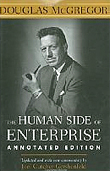 Leadership is a call to each and every one of us; a call to listen to what’s really needed in our own lives, families, organizations and communities. Leadership is about service to ourselves for the sake of being the best we can be; to each other for the sake of supporting and sustaining strong, productive and healthy relationships; and to our community and organizations for the sake of building and sustaining health, wholeness, productivity and fulfillment.
Leadership is a call to each and every one of us; a call to listen to what’s really needed in our own lives, families, organizations and communities. Leadership is about service to ourselves for the sake of being the best we can be; to each other for the sake of supporting and sustaining strong, productive and healthy relationships; and to our community and organizations for the sake of building and sustaining health, wholeness, productivity and fulfillment.
The Leadership Journey is both personal and interpersonal and requires that we understand and are able to answer three fundamental questions:
- What is leadership?
- Who are the leaders in your community?
- What is the call to leadership?
What is Leadership?
Leadership starts with self.
Strong leaders know who they are, and are grounded in their values and beliefs. Strong leaders act with integrity because they are able to say what they mean and do what they say.
Leaders see possibilities and can align their actions with a common vision that supports the highest good of the stakeholders in their community – whether an individual, family or organization.
Leadership is a strong “I” and a strong “We.”
A strong sense of self (a strong “I”) helps make a strong community (a strong “WE”). When people who are grounded and committed can come together for a common purpose, everything is possible!
THINK ABOUT…
- What is your leadership role in your own life?
- What really matters in your life and your community that you are ready to say YES! to?
Who are the Leaders in Your Community?
Everyone is a leader in your community.
Everyone has the potential at any point in time to step into leadership and be their strong “I.” We do this by claiming and utilizing our natural gifts and talents.
In all of recorded history there is no one else exactly like you.
Therefore, if you hold back, the world will not have your gifts – what you came here to be and do. Author Paulo Coelho says, “The magic moment is that in which a YES or a NO may change the whole of our existence.” So, what if Rosa Parks would have said ‘no’ to her inner voice that demanded she not give up her place on the bus!
THINK ABOUT…
- The world needs your leadership. What are your natural gifts and talents that you’re ready to give?
- Where do you hold back and how will you challenge yourself to step into leadership for the sake of a better self, a better life or a better world?
What is the Call to Leadership?
The call to leadership is living your strong “I” and cultivating a strong WE.”
The world needs each and everyone of us to be able to be who we truly are everyday. My one goal in life has always been to “Be who I am, do what I love in the place I belong.” The strong WE of leadership is a call to look into our lives, our community, and our organization to see what is really needed – then to take positive actions that create value in the world.
THINK ABOUT…
- What is it that your heart cries out to contribute?
- What is the difference you’ve been longing to make?….What you’ve been tolerating in the world?
- What is one positive action you might take today that will create value for yourself, your family, organization or community?
by Jackie Levin




 Posted by mindfulinnovation
Posted by mindfulinnovation 





 Leadership is a call to each and every one of us; a call to listen to what’s really needed in our own lives, families, organizations and communities. Leadership is about service to ourselves for the sake of being the best we can be; to each other for the sake of supporting and sustaining strong, productive and healthy relationships; and to our community and organizations for the sake of building and sustaining health, wholeness, productivity and fulfillment.
Leadership is a call to each and every one of us; a call to listen to what’s really needed in our own lives, families, organizations and communities. Leadership is about service to ourselves for the sake of being the best we can be; to each other for the sake of supporting and sustaining strong, productive and healthy relationships; and to our community and organizations for the sake of building and sustaining health, wholeness, productivity and fulfillment.